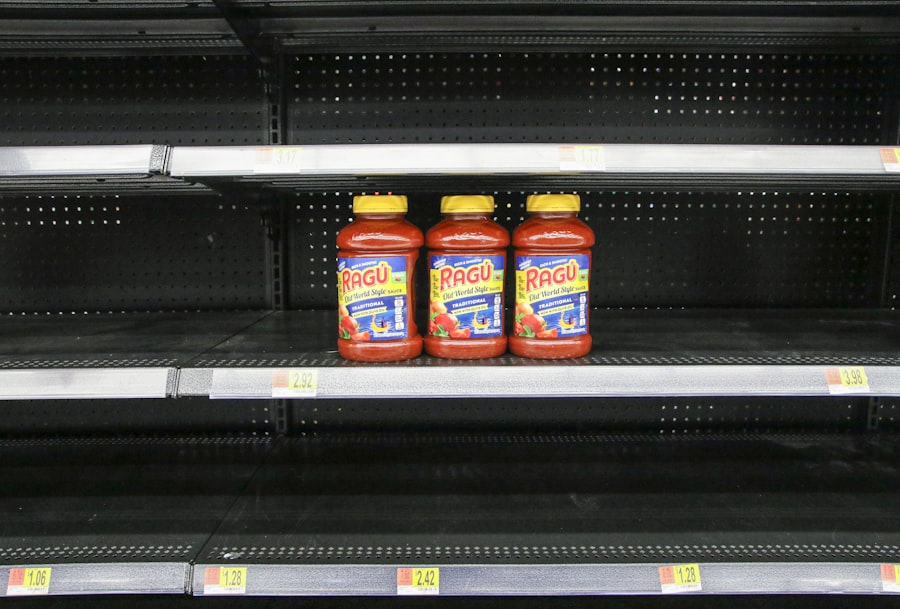Walmart, a retail giant known for its vast network of stores across the globe, has recently faced a wave of store closures that has raised eyebrows and sparked discussions among consumers, employees, and industry analysts alike. These closures are not merely a reflection of a single company’s struggles but rather a complex interplay of various economic, social, and technological factors. As the largest retailer in the world, Walmart’s decisions resonate far beyond its own balance sheets, impacting local economies, employment rates, and consumer behavior.
Understanding the reasons behind these closures requires a deep dive into the multifaceted landscape in which Walmart operates. The phenomenon of store closures is not unique to Walmart; it is part of a broader trend affecting many brick-and-mortar retailers. However, given Walmart’s prominence, its actions serve as a bellwether for the retail industry as a whole.
The closures often lead to significant discussions about the future of retail, the evolution of consumer habits, and the challenges faced by traditional stores in an increasingly digital world. As Walmart navigates these turbulent waters, it becomes essential to explore the various factors contributing to its decision-making process regarding store closures.
Key Takeaways
- Walmart is closing stores due to a variety of economic, consumer, and corporate factors.
- Economic factors such as rising costs and market saturation are impacting Walmart stores.
- Competition from other retailers and changing consumer preferences are also contributing to store closures.
- Labor and employment issues, as well as real estate and location considerations, play a role in closures.
- Walmart’s strategic decisions, regulatory challenges, and technological advancements also impact store closures.
Economic Factors Impacting Walmart Stores
The economic landscape plays a crucial role in shaping Walmart’s operational strategies, including its decision to close certain stores. Economic downturns, inflationary pressures, and shifts in consumer spending patterns can significantly influence retail performance. For instance, during periods of economic uncertainty, consumers tend to tighten their budgets, leading to decreased foot traffic in stores.
This decline in sales can prompt Walmart to reevaluate the viability of specific locations, especially those that are underperforming. Moreover, rising operational costs, including rent, utilities, and labor expenses, can further strain profitability. In recent years, many retailers have grappled with increased costs due to supply chain disruptions and inflationary trends.
For Walmart, which operates on thin profit margins, these economic pressures can necessitate difficult decisions regarding store closures. By analyzing sales data and market conditions, Walmart can strategically determine which locations may no longer be sustainable in the current economic climate.
Competition and Market Saturation

Walmart operates in an intensely competitive environment where it faces challenges from both traditional retailers and emerging e-commerce platforms. The rise of online shopping has transformed consumer expectations and shopping behaviors, compelling Walmart to adapt its business model. As competitors like Amazon continue to capture market share with their convenience and extensive product offerings, Walmart must reassess its physical store presence.
Market saturation is another critical factor influencing Walmart’s store closure decisions. In some regions, the company has established multiple locations within close proximity to one another. While this strategy may have initially aimed to dominate local markets, it can lead to diminishing returns as consumer preferences shift toward online shopping.
Consequently, Walmart may find it necessary to consolidate its physical footprint by closing underperforming stores in areas where competition is fierce or where market demand has waned.
Shifting Consumer Preferences
| Year | Percentage of Consumers | Preferred Product |
|---|---|---|
| 2018 | 30% | Traditional Brands |
| 2019 | 40% | Eco-friendly Products |
| 2020 | 45% | Organic and Natural Options |
Consumer preferences are evolving at an unprecedented pace, driven by technological advancements and changing lifestyles. Today’s shoppers are increasingly seeking convenience and personalized experiences, often favoring online shopping over traditional brick-and-mortar visits. This shift has prompted retailers like Walmart to rethink their strategies and adapt to new consumer behaviors.
As consumers prioritize convenience, they are more likely to opt for online shopping options that allow them to browse and purchase products from the comfort of their homes. This trend has led Walmart to invest heavily in its e-commerce capabilities while simultaneously evaluating the necessity of maintaining numerous physical locations. The decision to close certain stores may reflect an understanding that resources could be better allocated toward enhancing online services and improving delivery options rather than sustaining underperforming brick-and-mortar outlets.
Labor and Employment Issues
Labor dynamics play a significant role in Walmart’s operational decisions, including store closures. The retail sector has faced ongoing challenges related to labor shortages, wage pressures, and employee retention. As competition for skilled workers intensifies, companies like Walmart must navigate the complexities of maintaining a motivated workforce while managing operational costs.
In some cases, store closures may be driven by difficulties in staffing certain locations adequately. If a store struggles to attract and retain employees due to wage disparities or unfavorable working conditions, it may become less viable as a business unit. Additionally, labor-related issues can impact customer service quality and overall store performance.
By closing underperforming locations that face persistent labor challenges, Walmart can focus on optimizing its workforce in more profitable areas.
Real Estate and Location Considerations

The real estate landscape is another critical factor influencing Walmart’s store closure decisions.
In some instances, changes in local economies or population shifts may render certain locations less viable over time.
Furthermore, the cost of real estate can fluctuate dramatically based on market conditions. If rental prices rise significantly in a particular area or if property taxes increase substantially, maintaining a store in that location may no longer be financially feasible. By strategically closing stores in high-cost areas or those with declining customer bases, Walmart can redirect resources toward more promising locations or invest in enhancing its online presence.
Corporate Restructuring and Strategic Decisions
Walmart’s corporate structure and strategic vision also play pivotal roles in determining which stores remain open and which are closed. As the company adapts to changing market conditions and consumer preferences, it may undergo restructuring efforts aimed at streamlining operations and improving efficiency. These strategic decisions often involve evaluating the performance of individual stores within the broader context of the company’s goals.
In some cases, corporate restructuring may lead to the consolidation of resources or a shift in focus toward specific product lines or services. For instance, if Walmart decides to prioritize its grocery offerings over general merchandise due to changing consumer habits, it may choose to close stores that do not align with this strategic direction. By making calculated decisions based on performance metrics and market trends, Walmart can position itself for long-term success while minimizing losses associated with underperforming locations.
Regulatory and Legal Challenges
Walmart’s operations are subject to various regulatory frameworks that can impact its decision-making processes regarding store closures. Local zoning laws, labor regulations, and environmental considerations can all influence where and how Walmart operates its stores. Navigating these legal complexities requires careful planning and compliance efforts.
In some instances, regulatory challenges may arise that make it difficult for Walmart to maintain certain locations. For example, if a store faces zoning restrictions that limit its ability to operate effectively or if it encounters legal disputes related to labor practices or environmental concerns, the company may opt to close that location rather than invest resources into resolving these issues. By proactively addressing regulatory challenges and assessing their potential impact on store viability, Walmart can make informed decisions about its physical footprint.
Community and Social Impact
The closure of Walmart stores can have profound effects on local communities, often sparking discussions about economic stability and social responsibility. As one of the largest employers in many regions, Walmart’s presence contributes significantly to local economies through job creation and tax revenue generation. When a store closes, it can lead to job losses for employees and reduced access to affordable goods for consumers.
Moreover, community reactions to store closures can vary widely based on local circumstances. In some areas, residents may express frustration over losing access to essential services or affordable products that Walmart provides. Conversely, some communities may welcome closures if they believe it will pave the way for new businesses or revitalization efforts.
Understanding these community dynamics is essential for Walmart as it navigates the complexities of store closures while striving to maintain positive relationships with local stakeholders.
Technological Advancements and E-commerce
The rapid advancement of technology has fundamentally transformed the retail landscape, compelling companies like Walmart to adapt their strategies accordingly. E-commerce has emerged as a dominant force in consumer shopping behavior, prompting retailers to invest heavily in online platforms and digital marketing initiatives. As consumers increasingly turn to online shopping for convenience and variety, traditional brick-and-mortar stores face mounting pressure.
Walmart has recognized the need to embrace technological advancements by enhancing its e-commerce capabilities and integrating digital solutions into its operations. This shift often leads to reevaluating physical store locations; if certain stores are unable to compete effectively with online alternatives or if they do not align with the company’s digital strategy, closures may become necessary. By focusing on technological innovation and e-commerce growth, Walmart aims to position itself as a leader in the evolving retail landscape while optimizing its physical presence.
The Complexities of Walmart Store Closures
In conclusion, the decision-making process behind Walmart’s store closures is multifaceted and influenced by a myriad of factors ranging from economic conditions to shifting consumer preferences and technological advancements. As one of the largest retailers globally, Walmart’s actions serve as a reflection of broader trends within the retail industry while also highlighting the unique challenges faced by brick-and-mortar establishments in an increasingly digital world. Understanding these complexities is essential for stakeholders—be they employees, consumers, or community members—who are affected by these closures.
Ultimately, the future of retail will depend on how companies like Walmart adapt their strategies in response to evolving consumer behaviors and economic realities while striving for sustainable growth in an ever-changing environment.
Walmart stores have been closing in various locations due to a combination of factors, including changing consumer habits and economic challenges. For a deeper understanding of the reasons behind these closures, you can read more in this related article: Why Walmart Stores Close. This article explores the impact of online shopping, local market conditions, and corporate strategies that contribute to the decision to shut down certain locations.
WATCH THIS! How Walmart KILLED The American Town
FAQs
Why do Walmart stores close?
Walmart stores may close for a variety of reasons, including underperformance, strategic realignment, or changes in market conditions.
How many Walmart stores have closed?
As of 2021, Walmart has closed hundreds of stores globally, with the exact number varying from year to year.
What happens to employees when Walmart stores close?
When a Walmart store closes, the company typically works to transfer employees to nearby locations or provide severance packages and assistance in finding new employment.
What impact do Walmart store closures have on communities?
The closure of a Walmart store can have significant impacts on a community, including job losses, reduced access to affordable goods, and changes in local economic dynamics.
Are there any specific criteria for Walmart to close a store?
Walmart considers a range of factors when deciding to close a store, including financial performance, market conditions, and strategic priorities.
